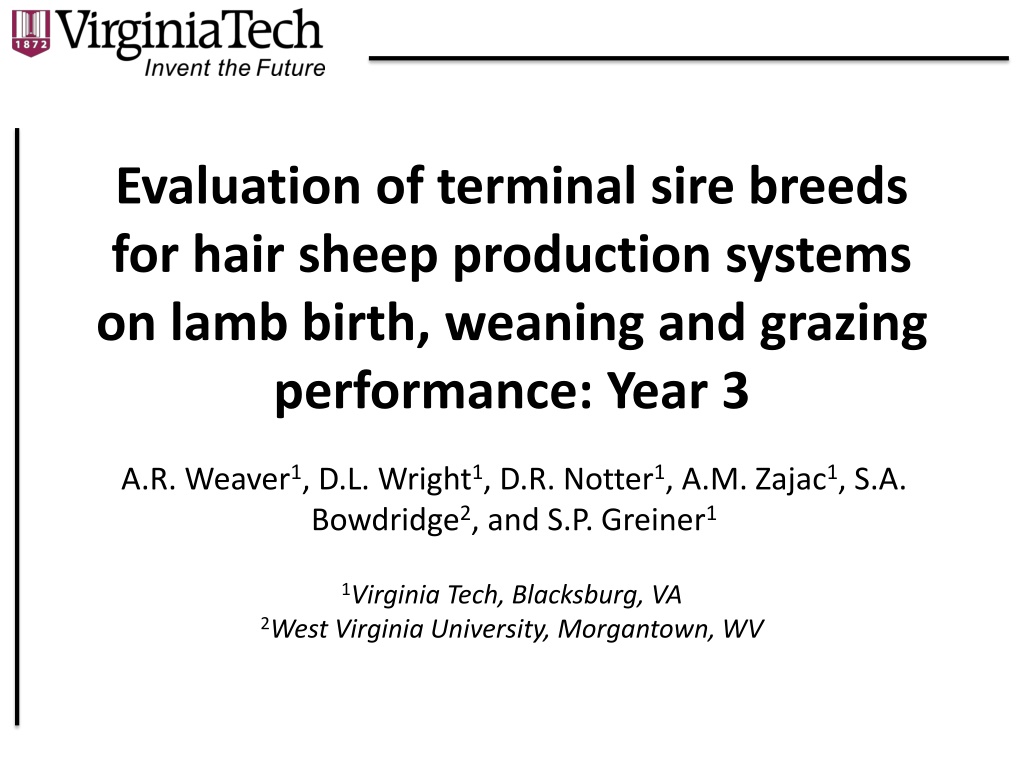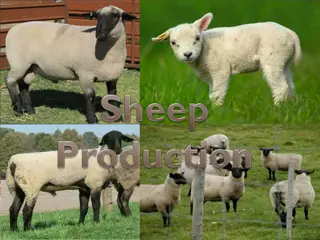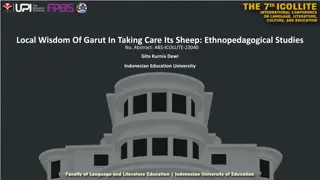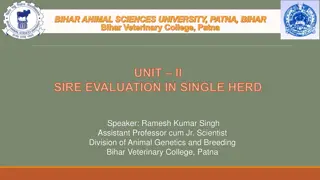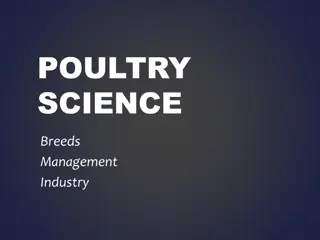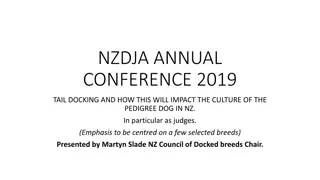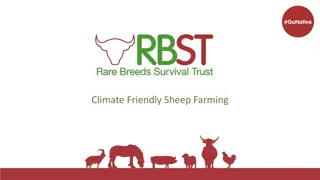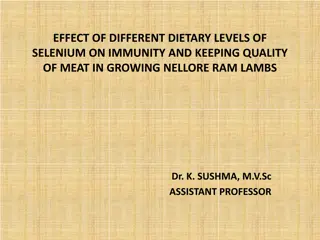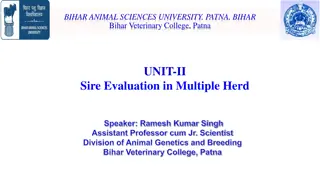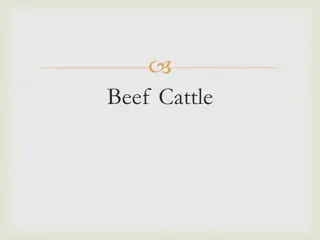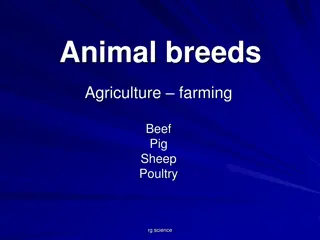Evaluation of Terminal Sire Breeds for Hair Sheep Production Systems: Year 3 Study
This study evaluates the efficacy of terminal sire breeds in hair sheep production systems to produce high-value market lambs focusing on survivability, growth, and parasite resistance. The research involves purebred Katahdin, Suffolk, and Texel sires, with a particular emphasis on grazing performance and lamb birth and weaning outcomes. Statistical analyses and experimental designs are utilized to assess the performance of different terminal sire options in a forage-based system. Key traits such as birth weight, post-grazing weight, and parasite resistance are evaluated across the various sire breeds to determine their impact on lamb production.
Download Presentation

Please find below an Image/Link to download the presentation.
The content on the website is provided AS IS for your information and personal use only. It may not be sold, licensed, or shared on other websites without obtaining consent from the author. Download presentation by click this link. If you encounter any issues during the download, it is possible that the publisher has removed the file from their server.
E N D
Presentation Transcript
Evaluation of terminal sire breeds for hair sheep production systems on lamb birth, weaning and grazing performance: Year 3 A.R. Weaver1, D.L. Wright1, D.R. Notter1, A.M. Zajac1, S.A. Bowdridge2, and S.P. Greiner1 1Virginia Tech, Blacksburg, VA 2West Virginia University, Morgantown, WV
Introduction Purebred Katahdin 2
Terminal Sire Options Suffolk Texel Traditional terminal sire Fast growth Muscle development Moderate mature size Forage adaptability??? 3
Objective Evaluate the efficacy of terminal sire breeds in hair sheep production systems to produce higher valued market lambs in terms of survivability, growth and parasite resistance
Experimental Design- Animals Katahdin Ewes (n = 52) n = 19 n = 19 n = 14 Texel Ram (n = 2) Katahdin Ram (n = 2) Suffolk Ram (n = 2) Purebred Katahdin Lambs (n = 31 weaned, 13 male progeny) Suffolk Sired Lambs (n = 24 weaned, 20 male progeny) Texel Sired Lambs (n = 34 weaned, 17 male progeny) 5
Experimental Design Management- Forage Based System Southwest Virginia Agriculture Research and Extension Center, Glade Spring, VA Summer Grazing Trial (90 d) Spring-Born Lambs Weaned Early June (70 d) Male progeny only Grazing Trial Management BW, FAMACHA, FEC and PCV every 14 d Dewormed at FAMACHA score 3 6
Statistical Analysis SAS (SAS Institute Inc., Cary, NC) Proc GLM: fixed effects of sire breed Proc MIXED for repeated measures analysis Tukey s HSD test was used for a comparative means analysis 7
Year 1 and 2 Summary Trait Katahdin Suffolk Texel Survivability Birth Weight Weaning Weight Post Grazing Weight Harvest and Carcass WT 12th Rib Fat LMA Leg Score Parasite Resistance
Adj. Number Born/Weaned NLB: P = 0.83 NLW: P = 0.82
Adj. Birth Weights P < 0.01
Adj. Weaning Weight P = 0.55
Pre-weaning Summary No differences in NLB/NLW Birth weights Texel-sired lambs heavier
Grazing ADG P = 0.78 13
Adj. Post-Weaning Weight P = 0.89
Growth Summary No differences in growth performance
Average FEC and PCV over grazing period P < 0.05
Average FEC and PCV over grazing period P < 0.01
FEC and PCV Summary Suffolk-sired lambs consistently greater FEC and lower PCV Texel-sired intermediate to Katahdin and Suffolk-sired lambs for both traits
FEC at Deworming Days to Deworming P = 0.98 P = 0.06 PCV at Deworming 21 P = 0.66
At Deworming Summary Katahdin lambs had the lowest deworming % and the greatest FEC at deworming (FAMACHA = 3) No differences between sire breeds for days to deworming or PCV at deworming
Summary and Conclusions Trait Katahdin Suffolk Texel Pre-weaning Growth FEC and PCV Deworming But
Summary and Conclusions Trait Katahdin Suffolk Texel Pre-weaning Growth FEC and PCV Deworming Carcass Merit Total 3 1 4.5 Texel sires provide the best combination of growth and carcass composition while maintaining a level of parasite resistance in their progeny
Acknowledgements Zajac Parasitology Lab Dr. Anne Zajac Kate Pouliot Lauren Page Southwest Virginia Agricultural Research and Extension Center (Glade Spring, VA) Lee Wright Jessica McAllister Jerry Rhea Eric Rutherford
